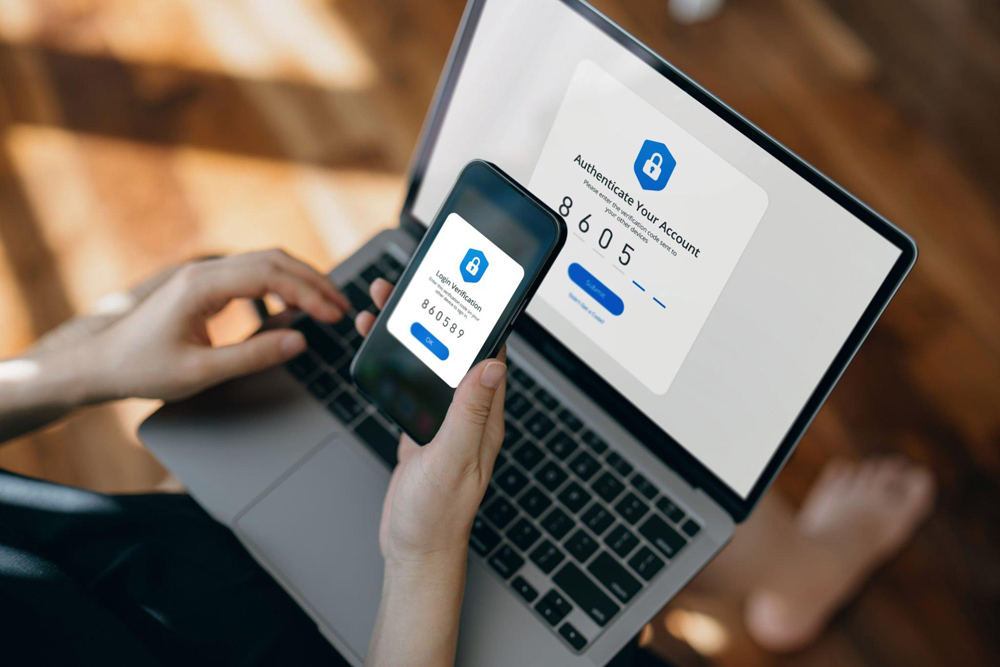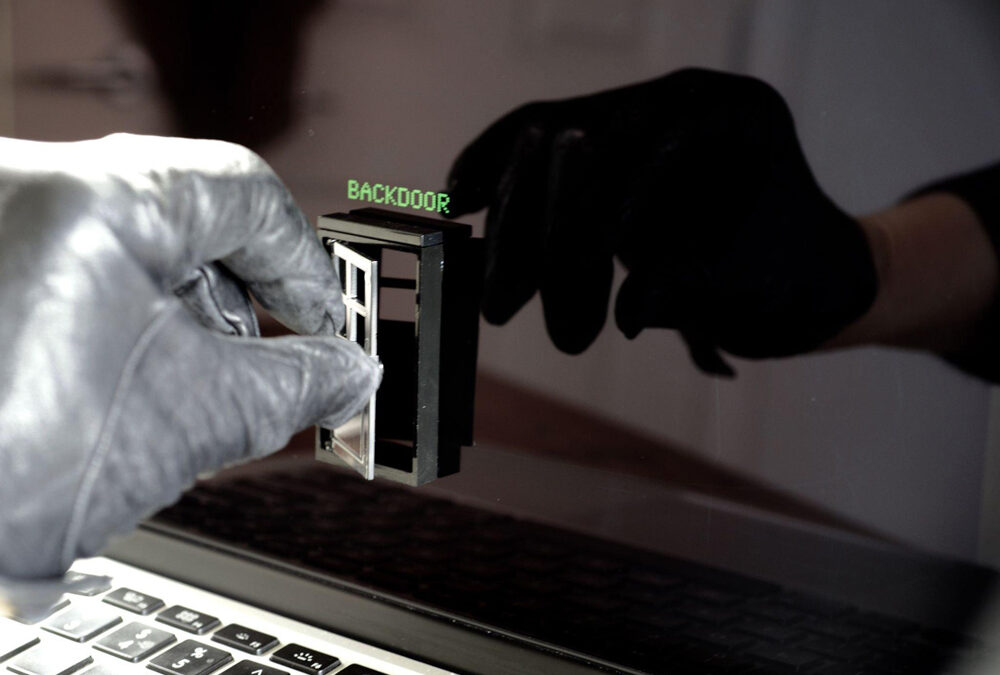As the race to keep up with the lightning speed of technology intensifies, Zero Trust is the savvy strategy that smart companies are embracing to stay ahead of the game. Gone are the days of blindly trusting traditional security models! We must evolve and adapt to the ever-changing threat landscape to stay ahead of the game.
Imagine having a security system like a hawk’s eye, never taking anything at face value and always verifying every access request. That’s the Zero Trust model, a revolutionary approach to security that challenges everything, from the user’s identity to their location and network. Regarding hybrid environments, remote workers, and cloud services, traditional perimeter-based security is about as useful as a screen door on a submarine.
Protecting your company from threats like sneaky insiders, unauthorized remote access, and sneaky lateral movement is daunting. Still, with Zero Trust, you can rest assured that your business is fortified against any would-be attackers. Traditional approaches are outdated and can leave gaps in your security infrastructure, leaving you vulnerable to attacks. Zero Trust reassesses access requests continuously, allowing only those who pass the rigorous screening process.
To keep hackers at bay, companies must go all-in on security. This means beefing up user identities, tightening access privileges, and slapping on some seriously strong authentication and authorization controls. Trust us; it’s worth the effort.

Table of Contents
What is Zero Trust Cyber Security?
Buckle up and get ready to rethink security – Zero Trust Cyber Security flips the script by assuming no one (and nothing) can be trusted until proven otherwise. It operates on the principle of “never trust, always verify,” meaning that every access request is challenged, regardless of who or what is requesting it. In contrast to traditional security models, which assume that everything inside a network can be trusted, Zero Trust requires constant verification of everything trying to access the network. This approach makes it much more difficult for outside intruders to gain unauthorized access while limiting insider threats. However, implementing Zero Trust can be complex and requires a holistic approach to security.
Zero Trust Security Pros
One of the main benefits of implementing a zero-trust security strategy is improved security. With cyber attacks more common than ever, a zero-trust security model ensures your organization is secure from potential threats. Additionally, it provides visibility into what is happening on the network, which is critical for detecting and mitigating potential attacks before they cause damage.
Another advantage of implementing a zero-trust security model is improved compliance. Organizations that deal with sensitive data must adhere to specific compliance standards. A zero-trust security model ensures that compliance requirements are met and monitored continuously. Sensitive data protection is another benefit of adopting a zero-trust security strategy. It limits the number of users who have access to sensitive data, ensuring that it is only accessible to those who need it. Lastly, a zero-trust security model prevents unauthorized access, one of the most common causes of security breaches.

What Makes Up a Zero Trust Network?
A Zero Trust security model has some technical terms that can overwhelm non-technical people, but you should recognize most of the terms below.
Multi-Factor Authentication (MFA)
Multifactor authentication is a security method that verifies the identity of a user by requiring them to present at least one additional form of authentication before they can access a system. This could be something only the user knows, something they have, or something moderately unique to them.
Access Control
Access control is crucial to the Zero Trust model, a security framework designed to eliminate implicit trust in users, devices, and applications. With Zero Trust, access is granted only after continuously verifying the identity and security posture of the user and device before access is authorized. This ensures that only explicit trust is given to the user, thereby reducing the network’s attack surface.
Zero Trust involves implementing strict controls on user and device access and is achieved through just-in-time and just-enough access policies that limit users’ access to only the essential resources needed for their tasks. The objective is to reduce security risks by removing unnecessary entry points that may result in unauthorized access.
Traditional access technologies like VPNs are now considered vulnerable, and organizations seek alternative options. These technologies provide broad access that can quickly become a security risk. With Zero Trust, access control is more granular, allowing for least-privilege access controls, which provide the minimum level of access required to perform a particular job function.
Segmentation and Micro-segmentation
Imagine a fancy hotel with different floors and rooms. Each room has a key that can only open that specific room. Now, imagine if this same concept is applied to networks – that’s segmentation! Breaking up the network into small “rooms” with different keys lets each part have separate access and control.
But now, let’s take it up a notch with micro-segmentation. Micro-segmentation is segmenting the already-segmented networks into even smaller “rooms.” This means that each network part has its unique set of keys that only open that specific part.
By implementing micro-segmentation in a Zero Trust architecture, the benefits are plenty. It helps reduce the attack surface for potential threats since attackers can’t easily move laterally between different parts of the network. It also enables more granular access control, reducing the damage an unauthorized user could do.
Overall, segmentation and micro-segmentation play a critical role in Zero Trust networks by ensuring separate access and control for each part of the network. They’re like the keys to each room in the hotel of your network, and implementing them means you’ll have better security and control over your environment.

Identity and Authentication
It’s not just about having a good defense system but also about ensuring that those trying to get in are who they say they are. That’s where identity and authentication come into play in a zero-trust environment.
Zero Trust requires all users and devices to be authenticated before granting access to any resources. This way, it’s all about creating a cybersecurity environment that never assumes implicit trust.
Strong authentication is essential in implementing Zero Trust, requiring multiple authentication factors before granting access. This can include biometric factors such as fingerprint scans, facial recognition, or one-time passwords sent to a user’s phone.
Standardized enforcement of access policies is also critical to ensuring that the right level of access is granted to the right people only. The imposition of policies for all users and resources helps to maintain uniformity and reduce the chances of rogue devices slipping through the cracks.
Maintaining trust in a Zero Trust environment requires prioritizing identity security measures. Utilizing least-privilege access and ongoing threat monitoring can effectively prevent unauthorized access. Automated management of the identity lifecycle can also reduce the risk of human error in the system.
Application and Data Protection
Do you know what’s cooler than trusting someone blindly? Trusting no one – at least not when it comes to your company’s most valuable assets: your applications and data.
In a zero-trust network, you don’t just let anyone in and hope for the best. Instead, you use a series of security policies and strategies to secure your applications and data. One such strategy is encryption. By keeping your data encrypted, even if hackers get their hands on it, they won’t understand it.
Another strategy is data loss prevention. This involves monitoring your network for sensitive data and flagging any attempts to move it off it. It’s like having an eagle eye that watches your data’s every move. And let’s not forget about intrusion detection/prevention systems. These systems help identify and block attacks before they can cause any damage. Think of it as a security guard standing at the door of your network, keeping the bad guys out.
But it’s about more than just having the right technology in place. You also need to minimize your attack surface, limiting the number of ways a hacker can get in. And it would be best if you implemented strong access controls, ensuring that only authorized users have access to your applications and data.
The benefits of implementing these applications and data protection strategies are aplenty. By reducing your risk of cyber attacks, you’ll improve compliance and protect your company’s reputation. So, remember: just because you trust someone doesn’t mean you should let them anywhere near your valuable applications and data.

Endpoint Visibility and Control
In a zero-trust security model, ensuring endpoint visibility and control is crucial to maintaining a secure network. But what exactly does that mean? Simply put, endpoint visibility means being able to see all the devices that are accessing the network. Security teams can detect unauthorized access attempts by having a clear view of all endpoints.
To achieve endpoint visibility and control, the zero trust model requires devices to comply with certain health status standards before being granted network access. This ensures that devices accessing the network meet certain security requirements, such as up-to-date antivirus protection and software updates.
Several measures can be taken to enforce endpoint visibility and control. One such measure is the implementation of access control policies, which only allow authorized devices to access the network. Additionally, network segmentation can restrict device access to specific areas of the network.
Other measures include:
- Ensuring that devices are fully patched and up-to-date.
- Using encryption to secure sensitive data.
- Monitoring any suspicious activity.
Wrapping Up
Say goodbye to cyber threats once and for all with the revolutionary Zero Trust model. This ultimate digital bodyguard creates an impenetrable fortress from the inside out! By embracing an identity-centric strategy, organizations can fortify their network security measures with an impenetrable shield. Every device on the network undergoes rigorous security checks before being granted access, thwarting any malicious attempts and eliminating the risk of unauthorized access to sensitive information.
Navigating the twists and turns of our constantly evolving cyber world requires one thing above all else: practicality. The Zero Trust approach is a game-changer in the security world – it’s like a ninja, swiftly containing incidents before they can even think about causing major damage. Suppose your current security strategy isn’t up to scratch. In that case, it’s time to turn the tide and implement a robust Zero Trust strategy.
By implementing this approach, companies can avoid potential threats and secure their valuable information and assets. Remember, building a strong cyber defense starts from the inside out!


Recent Comments